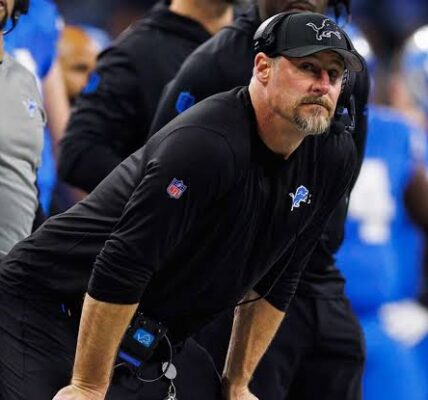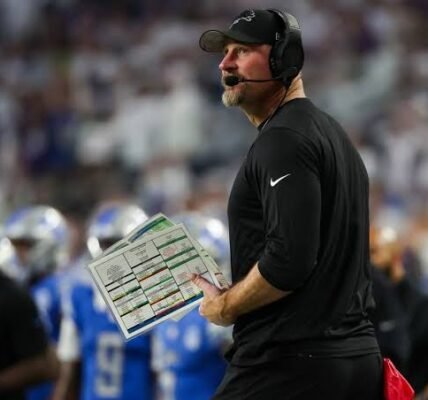NFL executive vice president of football operations Troy Vincent offered further explanation regarding the controversial ruling in the Detroit Lions’ Week 6 matchup against the Kansas City Chiefs.
In a saga that continues to linger, the NFL sought to clarify the confusion surrounding a decision during the Lions-Chiefs game. The debate centers less on the call itself and more on whether officials exceeded their authority. Detroit ran a trick play where quarterback Jared Goff went in motion and caught a pass from running back David Montgomery. Although it was initially ruled a touchdown, officials later gathered and determined the play was illegal because of an improper motion, wiping the score off the board.
Afterward, referee Craig Wrolstad stated that the league’s New York-based officiating command center—“Art McNally GameDay Central”—was not involved. However, Lions coach Dan Campbell said otherwise, claiming, “I know it came from New York,” during his postgame presser. He doubled down on that assertion later that week on his 97.1 The Ticket radio appearance, saying an official told him the decision originated from New York.
The issue is that GameDay Central can only intervene for specific officiating corrections—not for illegal motion calls, which must be decided by on-field referees.
“It was not, and I’m unsure who Coach Campbell was referencing, but we did not (intervene),” Vincent told Mike Florio of ProFootballTalk. “We didn’t assist in that. We didn’t need to. I’m part of GameDay Central for every game. And, Mike, to clarify, you could hear the officials discussing the play in real time—before the touchdown even occurred.”
So why the delay in the ruling? Vincent compared the process to how referees handle intentional grounding: multiple officials must confirm all details before a flag is thrown.
“They’re communicating,” Vincent explained. “And in this instance—though it was an illegal shift—it’s similar to intentional grounding. Did the ball reach the line of scrimmage? Was there a receiver nearby? Was the quarterback still in the pocket? You could hear officials conferring. But we didn’t have to step in for this particular call.”
That explanation aligns with what Wrolstad said postgame, noting that once a quarterback shifts from under center, his motion falls under multiple officials’ responsibilities.
“It’s my job to see if the quarterback paused behind center,” Wrolstad said. “The down judge monitors motion, and we had to coordinate between him, my umpire, and my line judge to determine if he stopped before or after going in motion out of my view. There was some confusion about what we were each seeing, which is why the flag came in so late.”
The NFL is standing firm on its account, leaving three possibilities:
They’re lying to protect the league’s image.
Dan Campbell is lying for unclear reasons.
Or the on-field official who told Campbell it came from New York was mistaken.
Believe whichever version you prefer.




